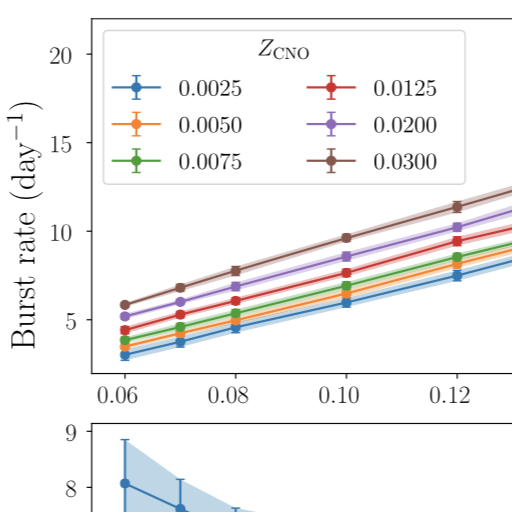Multi-epoch model-observation burst comparisons for GS 1826—238
 The "Clocked burster", GS 1826—238 is one of the best studied burst
sources, due to it's (mostly) consistent and regular bursts. However there's long been some
uncertainty about the fuel composition, with
some studies
suggesting metal-rich fuel, and
others metal-poor.
(Here by "metals" we mean an even more restrictive set than usually meant by
astronomers, of the CNO nuclei that contribute to steady H-burning prior to ignition).
The "Clocked burster", GS 1826—238 is one of the best studied burst
sources, due to it's (mostly) consistent and regular bursts. However there's long been some
uncertainty about the fuel composition, with
some studies
suggesting metal-rich fuel, and
others metal-poor.
(Here by "metals" we mean an even more restrictive set than usually meant by
astronomers, of the CNO nuclei that contribute to steady H-burning prior to ignition).
Now Monash PhD graduate Zac Johnston has resolved this uncertainty, with the most comprehensive observation-model comparison to date. He assembled a grid of almost 4000 KEPLER runs and performed a comparison to the observational data, via a novel interpolation scheme which speeds up the calculations by many orders of magnitude. His results confirm the "metal rich" scenario, and also provide constraints on the source distance and system inclination. His paper was just accepted by MNRAS. If you want to do your own burst comparisons, you can also check out the simulation grid data.
Read the paper (arXiv:1909.07977)
Labels: 2020, /postgrads




